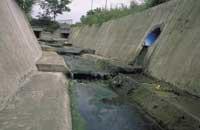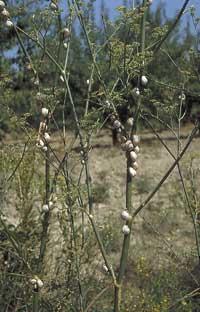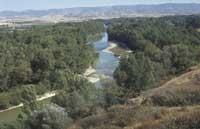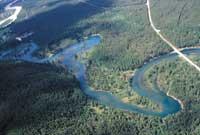Riverside and riverside forests in the Basque Country
2001/04/01 Estonba Mintxero, Mikel Iturria: Elhuyar aldizkaria
The situation of riparian forests and riparian forests is very different in the rivers of the Cantabrian or Mediterranean slope. In the former, due to the rugged orography, human settlements are in the lower areas of the valleys, so rivers and banks have long suffered heavy human pressure. At first, most of the riparian forests disappeared to obtain agricultural land. However, the greatest incidence occurred with the industrial revolution and the demographic growth that it assumed.
Both the soil needs of the industry and those derived from the growth of cities and towns, were saturated and continue to saturate at the expense of the banks and, in many cases, of the rivers. As a result, the wild canalizations of the urbanized rivers to the end became common. This caused the disappearance of the natural and ecological values of the rivers and banks and aggravated the pollution problems that began to suffer.
Therefore, the riparian forests of most of the rivers and streams of the Atlantic slope are at the end and those that remain are threatened, although theoretically the policies and approaches on the rivers take into account a natural and ecological vision, since the canalizations of the rivers and the destruction of the margins are something everyday.
In this unfortunate situation, few rivers have preserved their structured and natural margins to date. Among them are the Uhaitzandi river that crosses Zuberoa, the Errobi river, the Baztan-Bidasoa river, the high course of the Urumea river or the Leitzaran valley.

In general, the situation of the rivers on the Mediterranean side is better. On the one hand, the rivers are larger and on the other, thanks to a flatter orography, the human pressure exerted on the rivers and their banks is less intense. However, in these areas agriculture is of great importance and in order to obtain the land required by this activity, in many occasions riparian forests have been cut and rotated, and in other occasions riparian forest trees have been planted, replacing them with hybrid poplars, significantly reducing the ecological and
natural value of these aspects. Lobera, Campo Allende, Lopez-Val, Recuejo, Campo Llano, Escueral, Quebrado, La Mejana, Traslapuente, Girardelli...
are some of the most important river forests that have been preserved around these two great rivers. However, in the case of Arga, most of them are quite special, because due to the canalizations that took place a few years ago, some of the meanders and secondary channels that formed the rivers were isolated, so today they appear outside the rivers. Some of these isolated riverside forests, however, have preserved their natural structure, which has made that today most of them are protected, such as the riverside forests of Arquillo, Baraces, Gil,
Muga or Santa Eulalia, close to the towns of Peralta, Funes and Falces. However, often the instrument or regulation is not enough if there is no willingness to put it into effect. However, the situation of the Alava riparian forests is very different, since, in addition to the general legislation of rivers and margins, no measure of protection of these valuable natural spaces has yet been implemented, which makes this important part of our natural heritage continue at risk.

Gai honi buruzko eduki gehiago
Elhuyarrek garatutako teknologia






